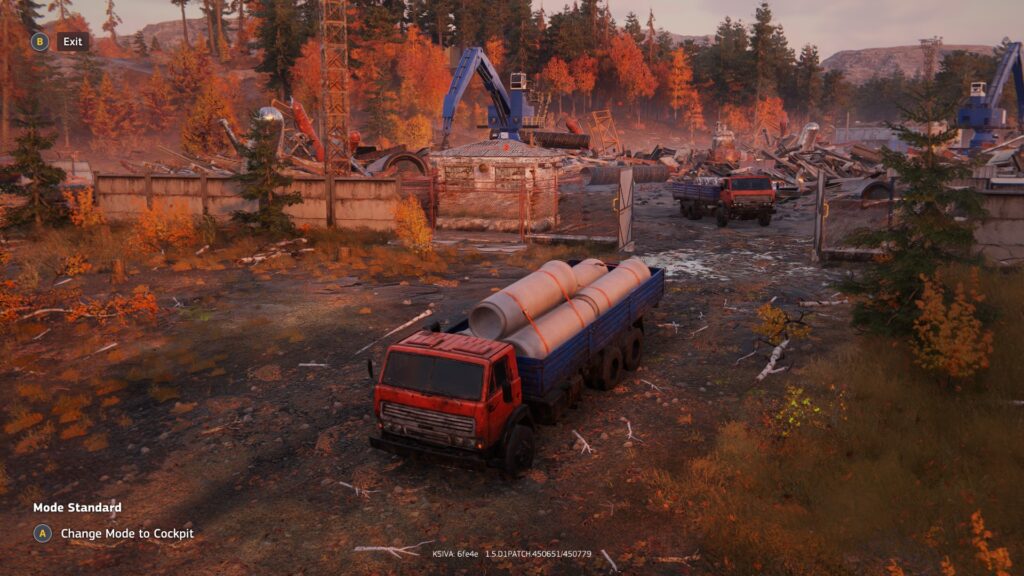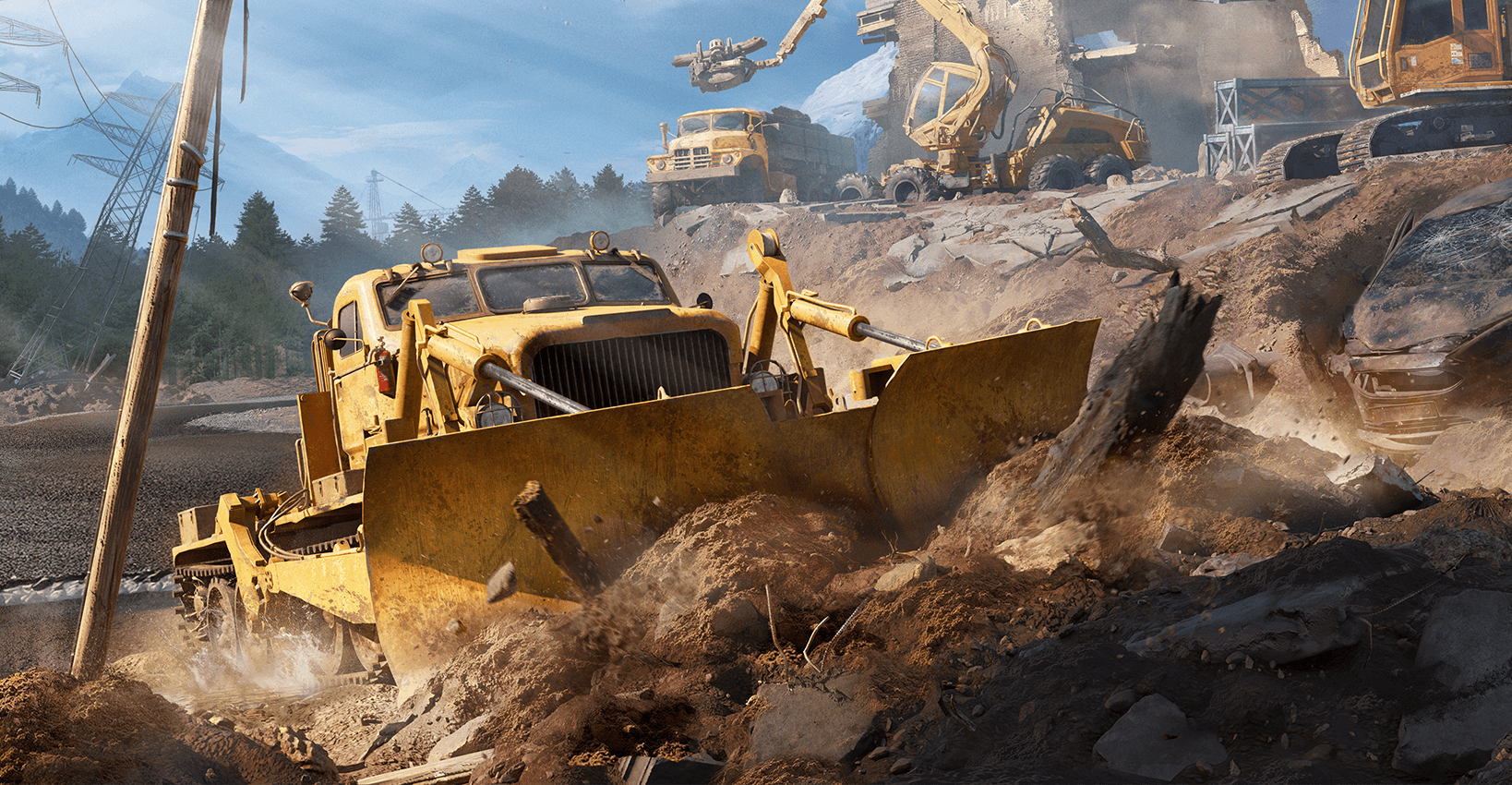The latest vehicle simulation from Saber Interactive, Roadcraft has been cleverly designed as the inverse of the developer’s 2020 cult hit Snowrunner. That earlier game, much expanded over the years by many expansions, is a pure trucking simulation with a strong focus on navigating hostile terrain. The ostensible framework for this was restoring normality to regions struck by natural disasters. In practice though, these zones rarely felt meaningfully changed by the player’s efforts. That is where Roadcraft comes in.
Once again, players are tasked with recovery operations in sprawling areas devastated by recent hurricanes, floods, or earthquakes. This time around, though, this work feels far more tangible and real. There is a lot of driving to be done in Roadcraft, but unlike Snowrunner the game is not about driving. Instead, it is about bringing infrastructure back online, and driving is a means to an end rather than the core challenge. This makes Saber’s latest effort more varied and dynamic than their earlier games. Once its systems slot into place, this is a beautifully engaging simulation of construction and logistics.
The game’s opening pace is surprisingly rapid. At the outset of the first of the eight devastated zones, the player possesses only one sturdy scout truck (from an initial choice of two). Very soon, Roadcraft introduces a growing fleet of highly specialised vehicles that would impress the cast of Thunderbirds. Some are dedicated to familiar activities like hauling resources or lifting objects with cranes, but others are designed for tasks that Saber are introducing for the first time.
The key examples of this are the “Bunker” and the “Katoc”, an asphalt paver and roller respectively. Used in concert with a sand-carrying dump truck and a grader, these machines are for road-building. Finally, Saber have provided players with a means of making journeys smoother. While slightly fiddly at first, both the automatic and manual methods of road-building soon become highly satisfying, and turn muddy tracks into smooth, shining asphalt.

This is particularly important because of another feature that is new to Roadcraft – infrastructure routes. These are player-plotted directions which are followed by convoys of AI-controlled trucks in order to satisfy main objectives. These convoys typically need new roads or bridges to be built in order to reach their destination and pay out rewards. In principle, this is a great idea – in practice, it is the most frustrating aspect of Roadcraft. The AI pathfinding is highly dubious (although improved somewhat by an early patch) and the drivers are both slow and timid. It can be agonising to babysit these robo-trucks on their appointed rounds, albeit satisfying when they finally make it.
There are some other issues. The UI is often needlessly confusing, especially when managing vehicles or switching between infrastructure tasks. The game’s performance also leaves something to be desired. At this early stage, its demand on system resources seems unnecessarily steep, especially in terms of memory, and it could be better optimised. It should be noted that Snowrunner took some time to hit its stride technically, and hopefully Saber can repeat that trick more swiftly this time around.
In so many ways, though, Roadcraft is already tremendously absorbing. The mission locales are often beautiful to look at, and are very thoughtfully designed. While at times it can seem that the objectives are too prescriptive, usually the player will feel that they are being given free rein to develop their own solutions. Road-building is a key tool in this respect. Sometimes, careful scouting of the map reveals an opportunity for a smart, paved shortcut which saves time and makes navigating the area that much more satisfying. The relatively flexible bridge-building system also facilitates fun solutions to navigation issues.

At times, Snowrunner can feel like a cruelly brutal grind, a hellish trek across terrain which Saber have made deliberately obtuse and hostile. While challenging in its own way, Roadcraft feels like a friendlier, more accessible game. While there is potential for frustration – such as with crane controls in tricky situations – this is usually a fairly smooth experience, a deep toybox which promises many hours of entertainment.
Roadcraft is at its best when careful use of several different vehicles has big effects on these beautiful, dynamic environments. On the early map “Sunken”, this comes when – after a sequence of tasks are completed – two flooded quarries are drained using new pumps the player has installed. As the water drains away, a new landscape is revealed, along with valuable items that can be sold for profit and the tantalising promise of new challenges ahead. If Saber can deliver these moments consistently, Roadcraft could be a valued fixture of the sim landscape for years to come.





